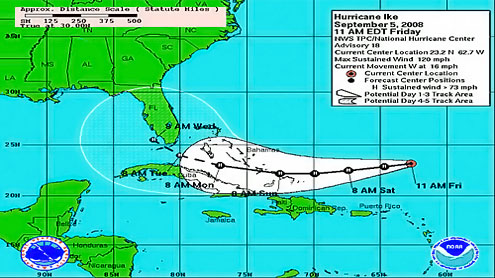
Hurricane Carlotta bore down on Mexico’s southwestern coast Friday evening, prompting residents and tourists alike to brace in the face of potent winds and heavy rains.
A tropical storm early Friday, Carlotta gained strength over the course of the day and was described as “a rapidly intensifying Category 2 hurricane” in the National Hurricane Center’s 2 p.m. (5 p.m. ET) advisory.The latest update, issued three hours later, reported that Carlotta had maintained its potency — with maximum sustained winds of 105 mph.By that point, the storm’s eye was situated about 10 miles (20 kilometers) south-southwest of Puerto Angel, Mexico, and 225 miles (365 kilometers) east-southeast of Acapulco.
“Hurricane-force winds are probably already occurring within the hurricane warning area, and these conditions will likely continue and spread westward (Friday night),” the center said in its 5 p.m. (8 p.m. ET) advisory.The hurricane warning is in effect for parts of the Pacific coast of Mexico, from the seaport city of Salina Cruz to the resort town of Acapulco. A warning means hurricane conditions are expected as soon as Friday night, according to the center.
A hurricane watch — which means hurricane conditions are possible — has been issued for coastal areas east of Salina Cruz to Barra de Tonala and west of Acapulco to Tecpan de Galeana.Carlotta’s top winds had measured 40 mph on Thursday and were only 70 mph early Friday, before it quickly picked up power. But now that part of the storm is already over land, Carlotta is not expected to get any stronger and should weaken over Saturday, the hurricane center predicted.The storm was moving toward the northwest at 12 mph and should continue at that speed through the night, the hurricane center said. The forecast calls for Carlotta to slow somewhat and turn more toward the west-northwest on Saturday.
Hurricane-force winds, which are 74 mph or stronger, on Friday evening extended out about 30 miles from the center of Carlotta.In addition to fierce winds, “a dangerous storm surge is expected to produce significant coastal flooding” north and east of the storm’s center. Near the coast, the surge will likely cause destructive waves, according to the hurricane center.Rainfall could cause “life-threatening” flash floods and mudslides, the center said, with some spots along the Oaxaca coast likely to get 12 to 15 inches of rain. – BBC











